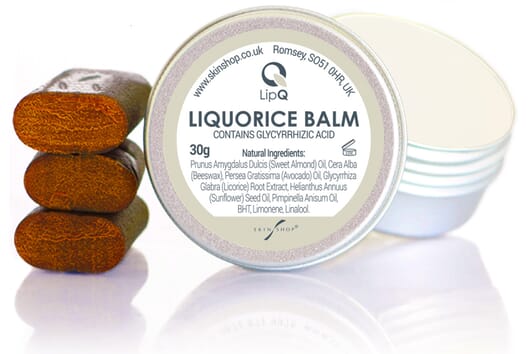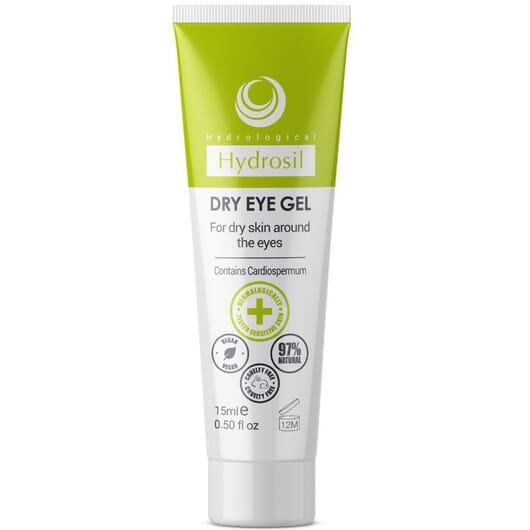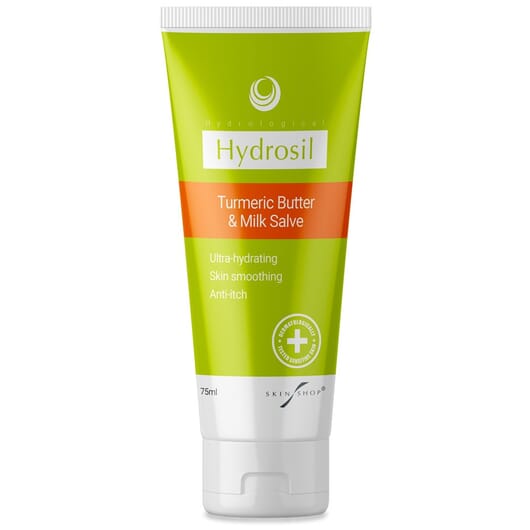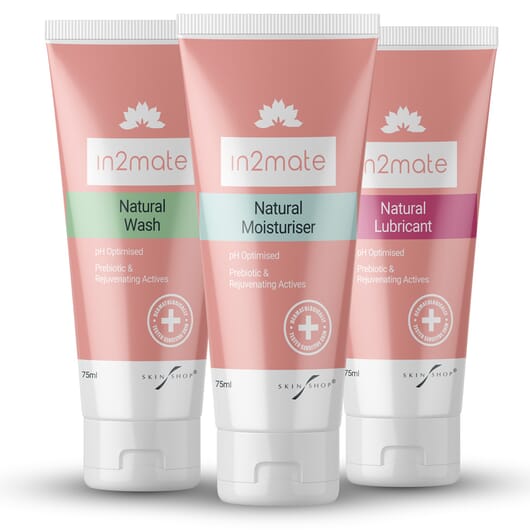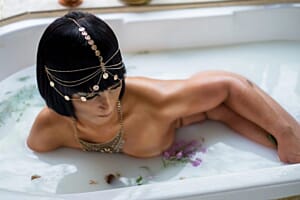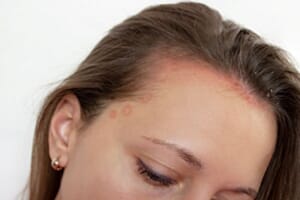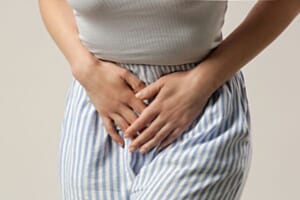Itchy skin is one of the most common ailments of hot weather and can cause heatwave hell, preventing you from sleeping or relaxing as well as distracting you from work and generally making life very uncomfortable.
Here consultant dermatologist Dr Eva Melegh gives her advice on the seven most common types of summer itch and how to get rid of them.
Itchy shins
The shins are often the first place where dry skin manifests itself, so if you are dehydrated from sleeping or working in air conditioned rooms your shins will be the first place where you are likely to get dry itchy and flaky skin.

Itching on the shins may also be caused by a contact allergy to grass from walking bare legged in the countryside or garden. This causes inflammation along with intense itching and will likely get wore at night.
How to treat it
If the shin skin is red, raised and itchy then its most likely a grass or plant contact allergy in which case an anti-histamine cream from the chemist should alleviate the problem.
If the skin is flaky and itchy without being raised or red then it’s more likely to be dehydration causing the problem. Use a non-perfumed intense salve or emollient on the area straight after showering in the evenings and re-apply in the morning.
For both causes avoid shaving or waxing the area until the itching and dryness has subsided. Keep legs out of direct sun and if possible keep them covered with light natural fibre clothing until they improve.
Itchy intimates
Itchy intimate areas are most likely to be caused by an infection caused by fungal overgrowth, commonly known as thrush or ‘scrotrot’, due to extreme heat building up in intimate areas.

Fungal growth flourishes in warm damp conditions so if you have vaginal itching or itching around the anal region its most likely to be fungal overgrowth causing the problem.
How to treat it
Anti-fungal creams for intimate skin containing the anti-fungal ingredient Clotrimazole are the quickest way to treat the problem.
However, once the itching has subsided fungus can still lurk in the intimate skin waiting for another chance to multiple again in the hot humid conditions. After a fungal infection the affected skin is often weaker and more vulnerable so its important to carry out diligent after care of the area while the heat is on in order to prevent a repeat fungal overgrowth.
Avoid any perfumed or chemical intimate products either for washing or lubrication purposes. Intimate skincare products that do not contain perfumes and contain ingredients for increasing good intimate skin bacteria are extremely beneficial for preventing re-infection with fungal over-growth.
Try In2mate skincare which has a natural intimate wash and natural lubricant that are over 99% natural and contain a special prebiotic designed for both internal and external intimate skin.
Itchy palms
Dyshidrosis is a skin condition that causes small, fluid-filled blisters to form on the palms of the hands and sides of the fingers. Sometimes the bottoms of the feet are affected too. This is a condition that is often triggered by extreme heat and is often referred to as ‘heat blisters’.
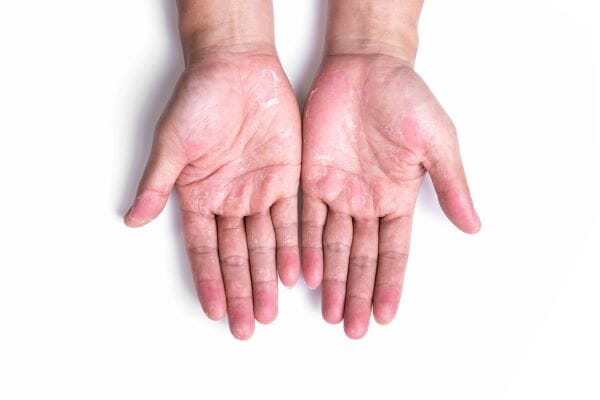
How to treat it
This condition is quite tricky to get rid of and can last for weeks. A treatment for insect bites such as Fenistil Gel, avaiable from the chemist, can initially reduce the intense itching from this condition. Once the itching has subsided its likely very dry hands will follow with the palms beoming flaky and the finger tips cracked. A rich perfume-free hypoallergenic hand salve designed for atopic skin should be used 2-3 times daily until the dryness and flaking has improved.
It’s important not to just use any hand cream as the skin is likely to be in a state of hyper-sensitivity during the recovery process and a chemical or perfume in a hand cream could kick the problem off again. Hand salves containing turmeric are particularly helpful as turmeric has an anti-inflammatory action.
Wear rubber gloves with a cotton internal glove for all household chores and do not get any cleaning products on hands. Wear thin latex or not latex gloves when washing hair to avoid getting shampoo chemicals on hands while they are still recovering.
Itchy eyelids
Itching, redness and flaking of the eyelid is likely to be caused by a combination of summer allergies to pollen and dust particles combined with sweat in extreme heat.
They may also be caused by an allergy to a sun cream (especially chemical filter ones) which while the rest of the face is not affected, the skin on the eyelids and around the eyes of much more delicate and so may react to the ingredients in SPF creams more easily. Its better to apply SPF to the whole face but protect the eye area with sun glasses when in direct sun.
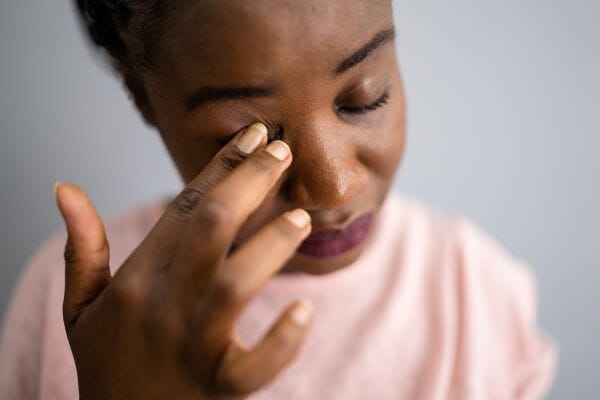
In addition, if you are of peri-menopausal age and have not previously suffered from hay fever but develop irritated and itchy eyelids this might be a condition called blepharitis, a common yet lesser-known early symptom of menopause caused by a drop in oestrogen. This condition can be triggered by extreme heat, much like hot flushes.
How to treat it
This condition it particularly uncomfortable and also very visible yet unfortunately the usual go-to treatment of hydrocortisone creams for atopic skin flares are not suitable for the delicate area around the eyes as they can cause permanent damage.
However phytosterols, which are natural substances from plants with a similar yet milder action to chemical steroids, are gentle enough to use in this area and can be effective for quickly relieving itching, inflammation and dryness around the eye area.
Try Hydrosil Dry Eye Gel which contains the phytosterol cardiospermum halicacabum.
Itchy scalp
In very hot conditions an itchy scalp is often the result of sunburn to the scalp. Many of us forget that the scalp can get sunburned too, and while using SPF’s on the rest of the body, the scalp is often left exposed to direct UV rays and can easily get burned, resulting in dryness and itching followed by fine flaking that can last for several weeks.

Sweat, chlorine from pools and cheap hotel shampoos can also cause irritation, itching and dryness of the scalp.
How to treat it
The worse thing you can do for itching and flaking caused by sun burned scalp is to use an anti-dandruff shampoo, this will likely make it worse not better. Anti-dandruff shampoos are designed for fungal dandruff, this is dry scalp dandruff.
The best treatment is to avoid all shampoos and hair products that contain perfumes and chemicals until the itching and flaking subsides. Opt for a natural shampoo and preferably one that helps re-build scalp microbiota which will have been damaged by the sunburn.
Try Scalp Shield Shampoo & Tonic which contains a scalp prebiotic ingredient from passion fruit seeds to help repair damaged scalp microbiota.
Use a natural un-perfumed hair oil for conditioning while the hair is still damp after washing. Run a bit of oil through the ends of the hair to moisturise and condition them.
Avoid using a hair dryer if possible while scalp is recovering, or if you do use one use the lower heat setting.
Itchy crevices
Intense itching and inflammation in the cracks and crevices of the skin such as elbows, behind knees and ears, under the armpits and in the thigh and anal cracks are likely to be eczema.
Many adults who had eczema as children grow out of it as adults. However, in extreme heat conditions its not uncommon to see a recurrence of adult eczema in these vulnerable areas.
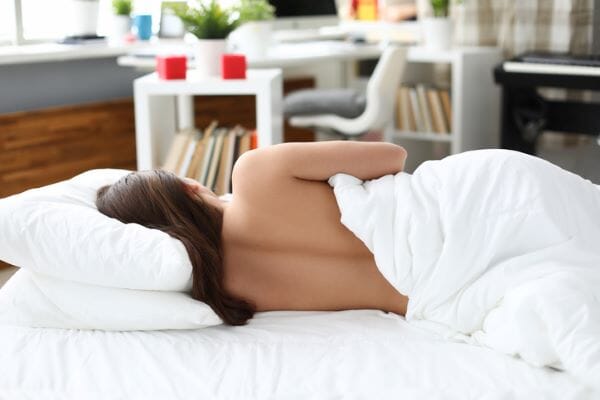
The heat combined with increased sweat along with chaffing from damp swimwear and sweaty clothing and underwear can trigger an eczema flare in adults that may not have experienced flares for several years.
How to treat it
A low dose hydrocortisone cream is the quickest way to relieve the problem but try not to use it for too long. As soon as the itching and redness subsides begin vigorous moisturising of the areas with a hypoallergenic emollient or salve 2-3 times daily.
Avoid any clothing that is rubbing on the effected area and try and keep it as aired and dry as possible until the skin improves. Shower in tepid water rather than hot water to reduce evaporation. Ideally sleep naked and keep the area from getting sweaty whenever possible. If sweat does build up, try and shower the dry sweat off as soon as possible and re-moisturise afterwards. If possible, avoid chlorine from pools until the skin has improved.
Itchy lips
Hot itchy skin around the lip area or under the nose is most likely the first sign of an emerging cold sore, which is caused by the herpes simplex virus, carried by about half the population.
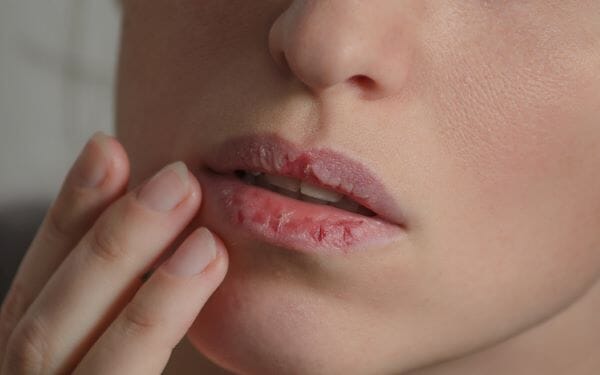
The virus lies dormant in the skin around the lip area and direct sun and heat are the main triggers for activating it. Before a cold sore actually appears, usually the area of skin around the lips or under the nose becomes hot and very itchy.
How to treat it
Once a cold sore has burst out there’s not a lot to be done. Most cold sore treatments are only for when an actual sore emerges such as Compeed Patches, aviable from chemists, which can help speed up the recovery process and also hide the sore from view to a degree.
However, the key with an emerging cold sore it to try and prevent it breaking out and an itch if often the earliest warning of an immanent cold sore.
Keep the area out of the sun, don’t touch it, don’t put make up on it and use a cold compress on it.
There are not many preventative treatments for cold sores, however one that has been trialled by the Herpes Virus Association is Lip Q Liquorice Balm which was found in the trial to reduce the severity and duration of cold sore outbreaks as well as increase the duration between outbreaks if used regularly and especially during periods of increased sun exposure.




